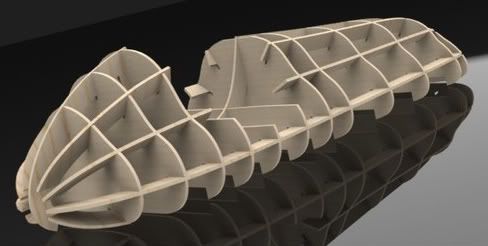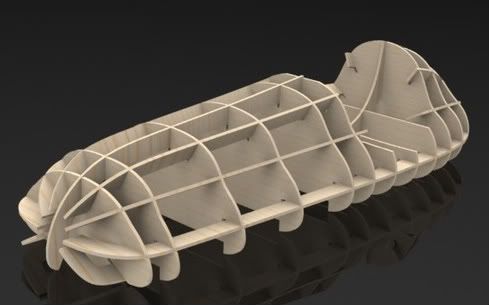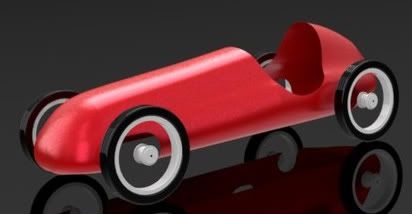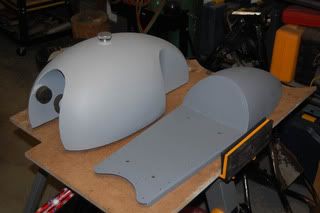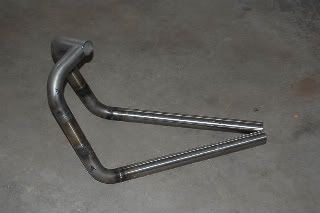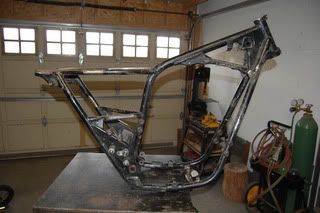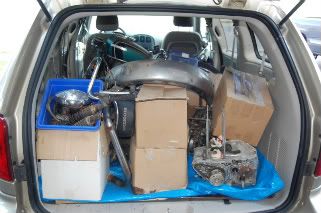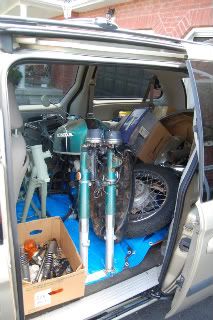Masekarti
I have been putting in some hours designing the buck from the 3D model I created earlier.
The issue I had before starting the buck design was, how complex/simple do I make it?
Because this is going to be a one-off project..well maybe a a two-off. I initially thought of ways to make the buck as simple as possible. But because I am a novice metalshaper, and I need all the help I can get, I decided for a more complex buck that will give me more surface information.
The next steps are to create the drawings from teh buck model and get 1:1 drawings printed so I can start cutting the buck stations out of plywood/MDF.
Tuesday, December 14, 2010
Tuesday, November 30, 2010
Four wheels
Masekarti
One of my long term dreams is to build my own sportscar. The three things that are most needed in a project such as this -- that I don't have currently -- are space, time and money.
So to give me the feel of this type of build without the above requirements, I figured I would scale down the build somewhat. So I'm going to build a approx 1/3 scale minikart. I was thinking intially a pedalcar, but because the body is going to be fairly narrow, an electric minikart is a better option.
The intent is construct the Masekarti similar to a real car build. So it will have a sheetmetal or aluminum body and a simple ladder frame chassis. I will be using 10" diameter spoke wheels on it and it will be powered by an electric sccoter motor (250W-350W) with a couple of 12V battery packs and a speed controller.
I figure the Masekarti should be good for 20-25km/h with 3-5 year old child piloting it.
So what I am going to build? Well, I have an appreciation for vintage/classic sportscars and racing cars from the 1940s/1950s/1960s time periods. So I have decided on building something similar in spirit to the 1949-50 Masertai 4CLT.
One of my long term dreams is to build my own sportscar. The three things that are most needed in a project such as this -- that I don't have currently -- are space, time and money.
So to give me the feel of this type of build without the above requirements, I figured I would scale down the build somewhat. So I'm going to build a approx 1/3 scale minikart. I was thinking intially a pedalcar, but because the body is going to be fairly narrow, an electric minikart is a better option.
The intent is construct the Masekarti similar to a real car build. So it will have a sheetmetal or aluminum body and a simple ladder frame chassis. I will be using 10" diameter spoke wheels on it and it will be powered by an electric sccoter motor (250W-350W) with a couple of 12V battery packs and a speed controller.
I figure the Masekarti should be good for 20-25km/h with 3-5 year old child piloting it.
So what I am going to build? Well, I have an appreciation for vintage/classic sportscars and racing cars from the 1940s/1950s/1960s time periods. So I have decided on building something similar in spirit to the 1949-50 Masertai 4CLT.
With the make/model of car selected, the next task is to make a 3D CAD model of it. The purpose of the model is to build a buck that I will use to help metalshape the Masekarti body.
I went online to a couple of sites that have freely available blueprints and found the one I needed. So after putting in a number of hours, I came up with this basic model. I still have to design the chassis and other mechanical pieces (steering, front/rear axle mounts etc), but this model will allow me to create the buck and start metalshaping.
Tuesday, November 9, 2010
Rust Never Sleeps
XS650 Cafe
I have had my gas tank, seat cowl, fender and battery tray in bare metal for some time now, and they were starting to gather surface rust. So I did some preliminary prep work and blasted them with primer.
This is an intermediate step until I get them painted early next year.
I got a start on welding the exhaust headpipes. I still need to weld on the flanges that attach the headpipe to the engines, and build the mufflers. But that will be done early spring next year.
I removed the engine from the frame and will be ready early spring next year to paint the frame and clean the engine up.
I have had my gas tank, seat cowl, fender and battery tray in bare metal for some time now, and they were starting to gather surface rust. So I did some preliminary prep work and blasted them with primer.
This is an intermediate step until I get them painted early next year.
I got a start on welding the exhaust headpipes. I still need to weld on the flanges that attach the headpipe to the engines, and build the mufflers. But that will be done early spring next year.
I removed the engine from the frame and will be ready early spring next year to paint the frame and clean the engine up.
Wednesday, August 4, 2010
Just Exhausted
XS650 Cafe
I have started to put together the exhaust system. I am using 16g stain steel tube comprising of 90 degree bends and straight tube. The next step after the headpipes have been fabricated is to build the mufflers. I will be fabricating reverse cone muffler from 20g stainless steel.
Other Motorcycles
I was able to pick up for a reasonable price, two more motorcycles that had both been disassenmbled. The motorcycles are a 1972 XS650 and a 1971 CB350. So my plan is to build another Cafe Racer from the XS650, using an aluminum tank, seat and fender set that I have been working on. For the CB350, my initial plan is to build a streettracker with a vintage feel/look to it.
I have started to put together the exhaust system. I am using 16g stain steel tube comprising of 90 degree bends and straight tube. The next step after the headpipes have been fabricated is to build the mufflers. I will be fabricating reverse cone muffler from 20g stainless steel.
Other Motorcycles
I was able to pick up for a reasonable price, two more motorcycles that had both been disassenmbled. The motorcycles are a 1972 XS650 and a 1971 CB350. So my plan is to build another Cafe Racer from the XS650, using an aluminum tank, seat and fender set that I have been working on. For the CB350, my initial plan is to build a streettracker with a vintage feel/look to it.
Saturday, July 17, 2010
Still at it
XS650 Cafe
I am trying to finish up leak test/repair on the tank this week, and then I can seal it.
For leak testing I hooked up a bicycle pump to one of the petcocks, and used a spray bottle with soapy water to check the joints. I found a a number of pinhole leaks that I sealed up using lead solder. I decided to use solder instead of welding to minimize the amount of heat being applied to the metal. Welding the pinholes would require to much heat leading to more warpage.
I will be coating the tank with POR-15 sealer, so if I miss a pinhole or two, it will be sealed. I would just prefer to eliminate as many leaks by soldering them first.
I also cut out the padding that will be going on the seat cowl. I stil deciding if I should increas the thickness in some areas.
Starting to mockup the exhaust header pipes. I need to get some stainless filler rod, then I can proceed to welding the tubing.
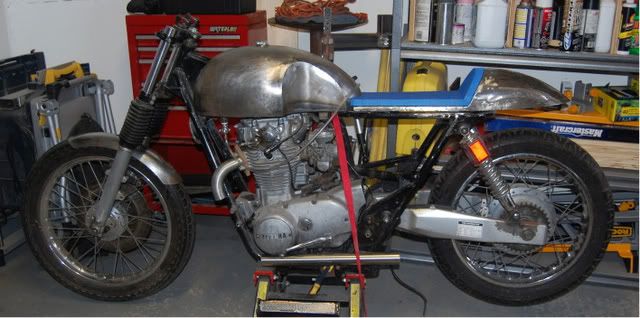
I am trying to finish up leak test/repair on the tank this week, and then I can seal it.
For leak testing I hooked up a bicycle pump to one of the petcocks, and used a spray bottle with soapy water to check the joints. I found a a number of pinhole leaks that I sealed up using lead solder. I decided to use solder instead of welding to minimize the amount of heat being applied to the metal. Welding the pinholes would require to much heat leading to more warpage.
I will be coating the tank with POR-15 sealer, so if I miss a pinhole or two, it will be sealed. I would just prefer to eliminate as many leaks by soldering them first.
I also cut out the padding that will be going on the seat cowl. I stil deciding if I should increas the thickness in some areas.
Starting to mockup the exhaust header pipes. I need to get some stainless filler rod, then I can proceed to welding the tubing.

Back at it
CNC Mill
It was fun while it lasted, but I decidede to sell it to free up the (little) time I have to focus on my metalshaping/motorcycle projects.
XS650 Cafe Racer
So I am back at the motorcycle project. I have to work furiously now to get what I can done during the summer.
The gas tank now has the fillercap, petcocks and front and rear mounts installed. I designed the front mounts such that they use the stock frame ears. It works well.

I reworked the seat cowl to butt up to the tank. When I get around to upholstering the seat cowl, I can make it flow from the gas tank.

The front fender is completed, I am now working on the mounting for it. I will be creating a fender mount that is also a fork brace.

Here is a pic of the gas tank and seat cowl set on the frame.
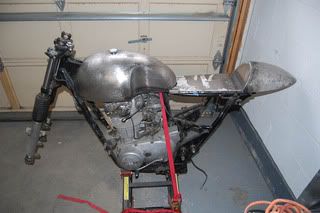
The exhaust system is being worked on also. I am creating it out of 1 5/8" stainless steel tubing. It will be 2-into-2 system with short (15m") megaphone mufflers.

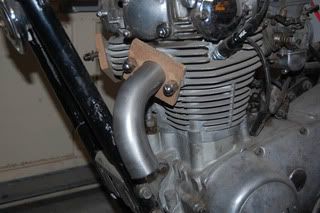
Miscellaneous Metalshaping
In my last entry I mentioned starting to work on creating a gas tank and seat cowl out of aluminum. Here is the original tank that I am using as a reference.

I have started to shape the tank pieces. Here are a couple of pictures showing the progression from flat sheet to some rough shape.
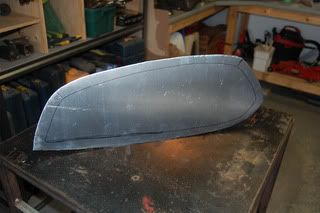
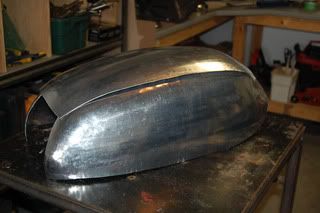
Here are a couple of pictures showing the seat cowl buck and the initial shaping so far.
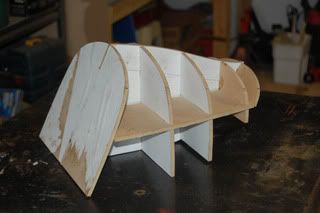
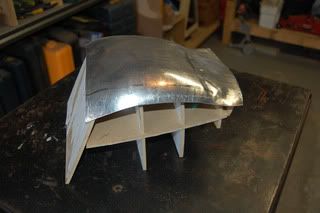
I am also creating in aluminum another gas tank identical to the steel one that was made for the Cafe Racer. Here is the progress on that so far.
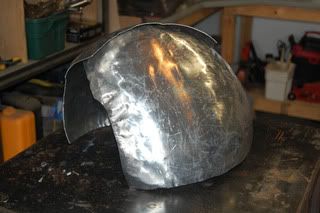
To weld these tanks and seat cowls I will be using gas welding, same as I use for welding steel sheetmetal. Gas welding sheet aluminum has it's own challenges, and is more difficult than steel sheetmetal. Why use gas welding for aluminum? Well, aside from it being the only welding equipment I have available, gas welding aluminum allows for a stronger weld. Gas welding can achieve full penetration of the weld joint more effectively than TIG welding.
Here is my first crack at gas welding aluminum. The first picture is the weld bead, the second picture is the weld bead filed down. Both pieces were butt welded.
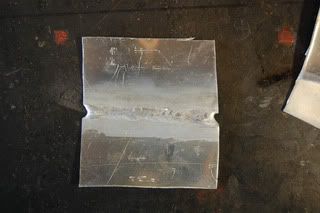
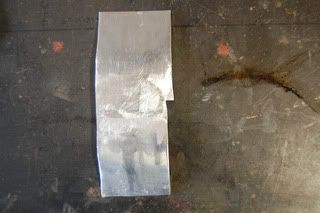
It was fun while it lasted, but I decidede to sell it to free up the (little) time I have to focus on my metalshaping/motorcycle projects.
XS650 Cafe Racer
So I am back at the motorcycle project. I have to work furiously now to get what I can done during the summer.
The gas tank now has the fillercap, petcocks and front and rear mounts installed. I designed the front mounts such that they use the stock frame ears. It works well.

I reworked the seat cowl to butt up to the tank. When I get around to upholstering the seat cowl, I can make it flow from the gas tank.

The front fender is completed, I am now working on the mounting for it. I will be creating a fender mount that is also a fork brace.

Here is a pic of the gas tank and seat cowl set on the frame.

The exhaust system is being worked on also. I am creating it out of 1 5/8" stainless steel tubing. It will be 2-into-2 system with short (15m") megaphone mufflers.


Miscellaneous Metalshaping
In my last entry I mentioned starting to work on creating a gas tank and seat cowl out of aluminum. Here is the original tank that I am using as a reference.

I have started to shape the tank pieces. Here are a couple of pictures showing the progression from flat sheet to some rough shape.


Here are a couple of pictures showing the seat cowl buck and the initial shaping so far.


I am also creating in aluminum another gas tank identical to the steel one that was made for the Cafe Racer. Here is the progress on that so far.

To weld these tanks and seat cowls I will be using gas welding, same as I use for welding steel sheetmetal. Gas welding sheet aluminum has it's own challenges, and is more difficult than steel sheetmetal. Why use gas welding for aluminum? Well, aside from it being the only welding equipment I have available, gas welding aluminum allows for a stronger weld. Gas welding can achieve full penetration of the weld joint more effectively than TIG welding.
Here is my first crack at gas welding aluminum. The first picture is the weld bead, the second picture is the weld bead filed down. Both pieces were butt welded.


CNC Mill(er) Time
CNC
I am gearing up to use the mill to cut out some prototype parts.
What I wanted to do before this is to build an enclosure for it. I haven't done that yet, but I am probably half-way there. A friend of mine who runs a metal fabrication business bent me up two 26" x 40" 16 gauge sheetmetal trays with 3" walls. The plan is to use them for the top and bottom of the enclosure and use .5" thick fibreglass coated plywood for the sides.
What I have installed is just the bottom tray, over the spring/summer I will finish the enclosure.
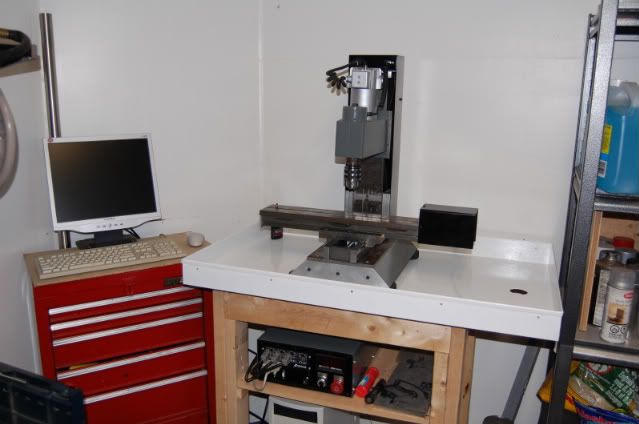
XS650 Cafe Racer
It has been a slow slog to finish off the metalwork on this motocycle, but I am slowly making headway. I have fully welded up both the gas tank and the seat cowl. Next step is to install some petcock bungs (2) on the tank and do a pressure test for pinhole leaks. After that install a filler cap, the front and rear mounts and call it a day for the tank.
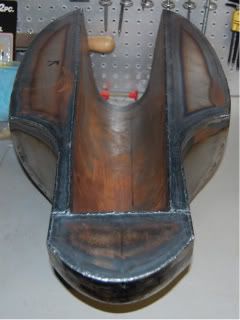

Miscellaneous Metalshaping
I have been really eager to get into doing some projects with aluminum, so I purchased a 4' x 6' of 3003 (.063"). My plan is to create a another gas tank and seat set like the one I am currently working on, but this time in aluminum and polish it.
As well, I have another gas tank that a friend of mine gave me that I like the shape of...it is more box-like. So I will be making two aluminum tanks of that tank design, but stretched 1.5" longer. I am in the midst of designing a seat cowl to match the flow of this tank.
I am gearing up to use the mill to cut out some prototype parts.
What I wanted to do before this is to build an enclosure for it. I haven't done that yet, but I am probably half-way there. A friend of mine who runs a metal fabrication business bent me up two 26" x 40" 16 gauge sheetmetal trays with 3" walls. The plan is to use them for the top and bottom of the enclosure and use .5" thick fibreglass coated plywood for the sides.
What I have installed is just the bottom tray, over the spring/summer I will finish the enclosure.

XS650 Cafe Racer
It has been a slow slog to finish off the metalwork on this motocycle, but I am slowly making headway. I have fully welded up both the gas tank and the seat cowl. Next step is to install some petcock bungs (2) on the tank and do a pressure test for pinhole leaks. After that install a filler cap, the front and rear mounts and call it a day for the tank.


Miscellaneous Metalshaping
I have been really eager to get into doing some projects with aluminum, so I purchased a 4' x 6' of 3003 (.063"). My plan is to create a another gas tank and seat set like the one I am currently working on, but this time in aluminum and polish it.
As well, I have another gas tank that a friend of mine gave me that I like the shape of...it is more box-like. So I will be making two aluminum tanks of that tank design, but stretched 1.5" longer. I am in the midst of designing a seat cowl to match the flow of this tank.
Tank Top
XS650 Cafe Racer
The top of the tank has both knee cutouts welded in. The next steps are to, grind down the welds, stretch the heat affect zone (HAZ) areas and metalfinish the tank.
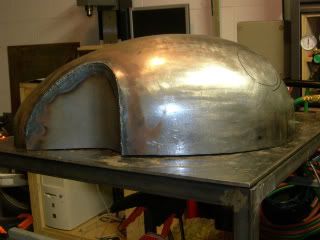
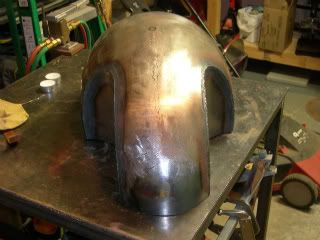
I managed to roll the tank tunnel as well. The results are pretty good.
I was stumped for a while trying to figure out how to roll the correct radius. A few emtpy apple juice cans provided the solution. I welded them together and rolled a piece of 16 gauge sheetmetal around it.
From the pictures you can see that the tunnel fits within the tank buck fairly well. The next steps are, weld the end cap on the one side (shorter side) and start the tank-to-tunnel fitment.
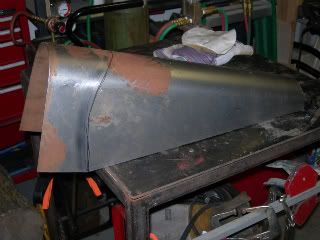
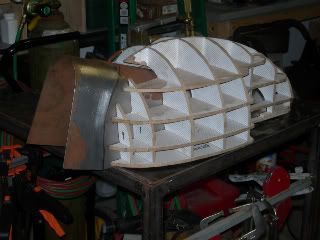
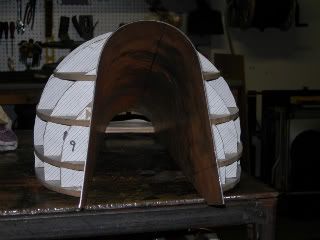
The top of the tank has both knee cutouts welded in. The next steps are to, grind down the welds, stretch the heat affect zone (HAZ) areas and metalfinish the tank.


I managed to roll the tank tunnel as well. The results are pretty good.
I was stumped for a while trying to figure out how to roll the correct radius. A few emtpy apple juice cans provided the solution. I welded them together and rolled a piece of 16 gauge sheetmetal around it.
From the pictures you can see that the tunnel fits within the tank buck fairly well. The next steps are, weld the end cap on the one side (shorter side) and start the tank-to-tunnel fitment.



Even More Milling Around
CNC Mill
The mill is finally at a stage where it is usable. Since the last blog entry, I have assembled the mill, tested it with the control software (Mach3) and have built a stand for it.

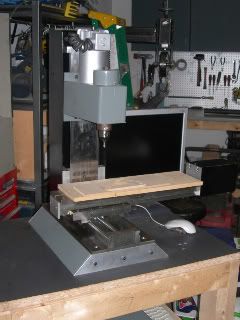
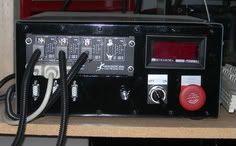
I purchased some basic tooling (end mill holders, end mill holders) and I cut a simple 2D part out of hardboard. For a first pass it wasn't too bad. I still have to dial the mill in by tramming the head and checking into the backlash.
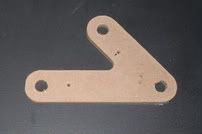
There are a few things still left to do:
Those things aside, the mill is finally functional and I can use it to prototype some parts for my motorcycle.
Here is a before and after of the mill from when I got it in Nov 2008 and how it is today.


Garage Stuff
I have been wanting to put together a small welding table for some time now. I finally was able to weld it up over the last couple of weeks.

The plan is to drill and tap a matrix of threaded holes into the tabletop. This will allow me to use bolt on fixtures to hold parts when I weld them.
XS650 Cafe Racer
Now that the CNC Mill is operational, I am focusing my attention on finishing the metalwork for this motorcycle.
I started working on the gas tank. I bent up pieces for the knee cut-outs and tack welded them into place. I'll be finishing off these welds and then bending up the tank tunnel and bottom.
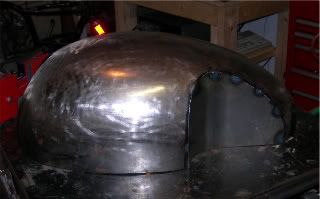
The mill is finally at a stage where it is usable. Since the last blog entry, I have assembled the mill, tested it with the control software (Mach3) and have built a stand for it.



I purchased some basic tooling (end mill holders, end mill holders) and I cut a simple 2D part out of hardboard. For a first pass it wasn't too bad. I still have to dial the mill in by tramming the head and checking into the backlash.

There are a few things still left to do:
- Wire up limit and home switches.
- Create a stand to mount the LCD monitor, keyboard and mouse.
- Create the tooling plate.
- Create a splashguard/enclosure for it.
Those things aside, the mill is finally functional and I can use it to prototype some parts for my motorcycle.
Here is a before and after of the mill from when I got it in Nov 2008 and how it is today.


Garage Stuff
I have been wanting to put together a small welding table for some time now. I finally was able to weld it up over the last couple of weeks.

The plan is to drill and tap a matrix of threaded holes into the tabletop. This will allow me to use bolt on fixtures to hold parts when I weld them.
XS650 Cafe Racer
Now that the CNC Mill is operational, I am focusing my attention on finishing the metalwork for this motorcycle.
I started working on the gas tank. I bent up pieces for the knee cut-outs and tack welded them into place. I'll be finishing off these welds and then bending up the tank tunnel and bottom.

More milling around
CNC
I have been continuing the work on mill retrofit.
The Control Box has been completed. I gave it a coat of paint, installed all the components and wired them up.
I purchased a used computer a few months ago that I am using to control the mill. So I intalled Mach3 on it, and tested out my wiring.
Some simple tests have shown that the Control Box works. The G540 through Mach3 is able to activate the relays for the spindle and flood coolant controls.
As far as the mill itself goes. There are a few of things I have done:
1. Base. Currently the mill was on a 3/8" of steel plate that was bolted to the original box. I fabricate a base out of 2"x2" steel tube and 1/8" steel plate. The idea being that the mill sits on this and this base is bolted to the mill stand.
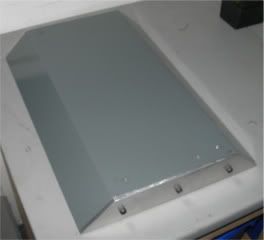
2. Anti-backlash. Using compression springs and thread Delrin blocks, I was able to devise an anti-backlash mechanism that I hope will improve the accuracy of the mill. The compression of the springs between the delrin block and the bronze nut yields almost 50lbs.

3. Motor mounts. On the x and y axis, I improved upon the motor mounts. I used aluminum standoff blocks, whereas the previous ones used a metal box that wasn't as secure.
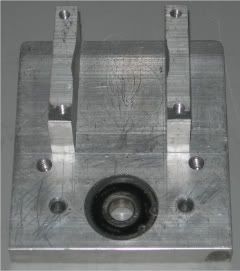
4. Cover. Because coolant eventually will be used on the mill, the exposed x axis motor needs to be protected. So a cover was fabricated from sheetmetal.
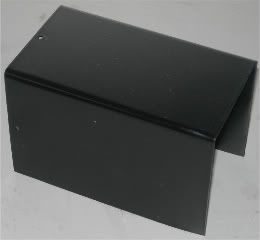
5. Paint. The mill has been painted, improving upon the colour scheme originally used.
6. Stepper Motors. The motors have been wired up, and just need to be plugged into the Control Box for testing.
Things left to do:
1. Assembly. Put the mill together.
2. Tooling Plate. I picked up a piece of 15" x 6" ALCOA MIC6 plate that will be used as a tooling plate. A matrix of drilled and tapped holes addd to it, and then it will be bolted to the mill table.
3. Limit Switches. After the mill is assembled and operational, limit switches will be installed.
4. Mill Stand. Need to construct a workbench that the mill will sit on, and eventually build an enclosure for it.
I have been continuing the work on mill retrofit.
The Control Box has been completed. I gave it a coat of paint, installed all the components and wired them up.
I purchased a used computer a few months ago that I am using to control the mill. So I intalled Mach3 on it, and tested out my wiring.
Some simple tests have shown that the Control Box works. The G540 through Mach3 is able to activate the relays for the spindle and flood coolant controls.
As far as the mill itself goes. There are a few of things I have done:
1. Base. Currently the mill was on a 3/8" of steel plate that was bolted to the original box. I fabricate a base out of 2"x2" steel tube and 1/8" steel plate. The idea being that the mill sits on this and this base is bolted to the mill stand.

2. Anti-backlash. Using compression springs and thread Delrin blocks, I was able to devise an anti-backlash mechanism that I hope will improve the accuracy of the mill. The compression of the springs between the delrin block and the bronze nut yields almost 50lbs.

3. Motor mounts. On the x and y axis, I improved upon the motor mounts. I used aluminum standoff blocks, whereas the previous ones used a metal box that wasn't as secure.

4. Cover. Because coolant eventually will be used on the mill, the exposed x axis motor needs to be protected. So a cover was fabricated from sheetmetal.

5. Paint. The mill has been painted, improving upon the colour scheme originally used.
6. Stepper Motors. The motors have been wired up, and just need to be plugged into the Control Box for testing.
Things left to do:
1. Assembly. Put the mill together.
2. Tooling Plate. I picked up a piece of 15" x 6" ALCOA MIC6 plate that will be used as a tooling plate. A matrix of drilled and tapped holes addd to it, and then it will be bolted to the mill table.
3. Limit Switches. After the mill is assembled and operational, limit switches will be installed.
4. Mill Stand. Need to construct a workbench that the mill will sit on, and eventually build an enclosure for it.
On the road again
CB750
The effort that I put into freshening up the CB750 paid off. I sold the bike and it's new owner will be picking it up this week.
CNC Mill
I have been working in the background on this project, and it is starting to come along...albeit, very slowly.
My main focus now is to complete the Control Box in the next few weeks, and then address the mechanical side of the mill.
Because I have sheetmetal stocked in my garage, I figured that would build a metal box to house all the electronics instead of purchasing one. So I did the layout in SolidWorks, which has an excellent sheetmetal features, and transferred them to sheetmetal. I used 16 gauge sheetmetal for the bottom of the box and 18 gauge everywhere else. The design of the box is such that I could fabricate it with one of those cheap sheetmetal brakes you can pick up at places like Busy Bee Tools.
The sheetmetal brake that was used.

These are some panels bent with the brake. The bottom panel on the left is 16 gauge and has a .5" lip bent on two parrellel sides to allow for riveting. Sitting on top of the bottom panel are two 'L' channels that will be riveted to it. The panels on the right are 18 gauge and have .5" lips bent on the short sides, as well as a "L" channel piece riveted to the top on each.
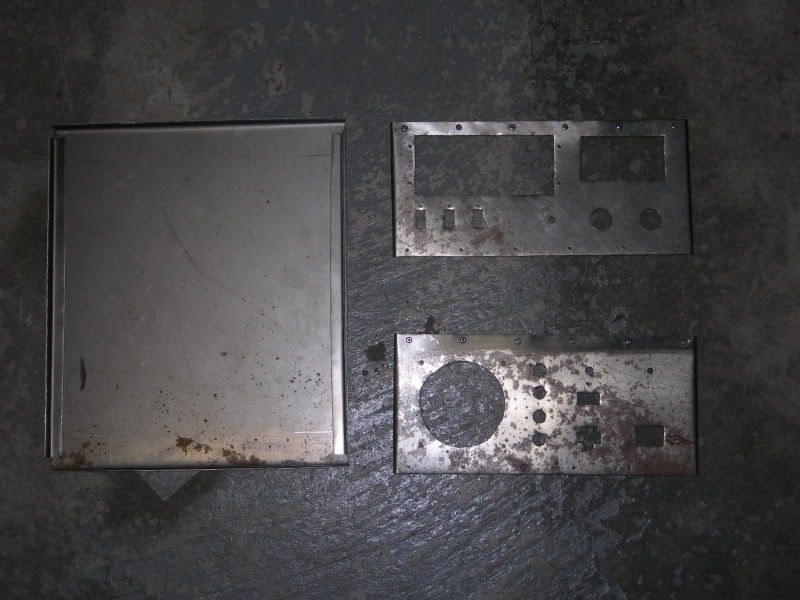
Mockup of the Control Box without the top.
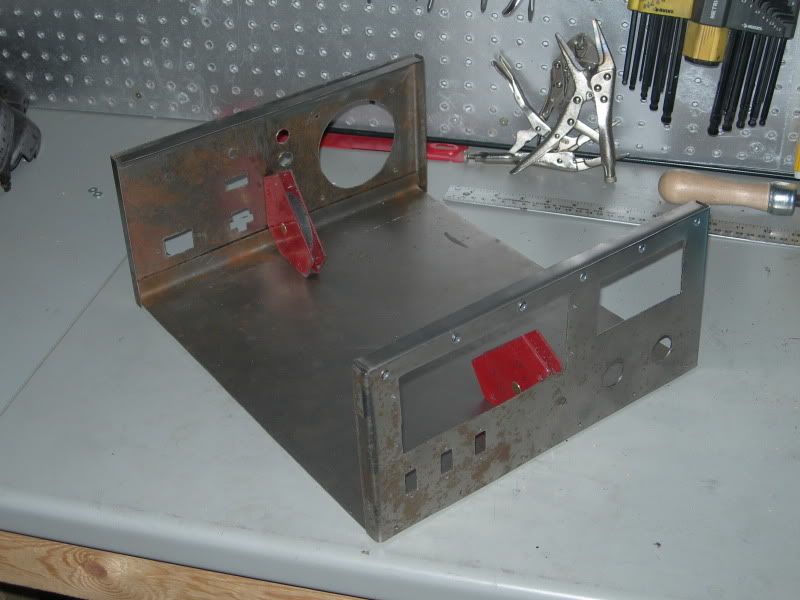
With the top on.
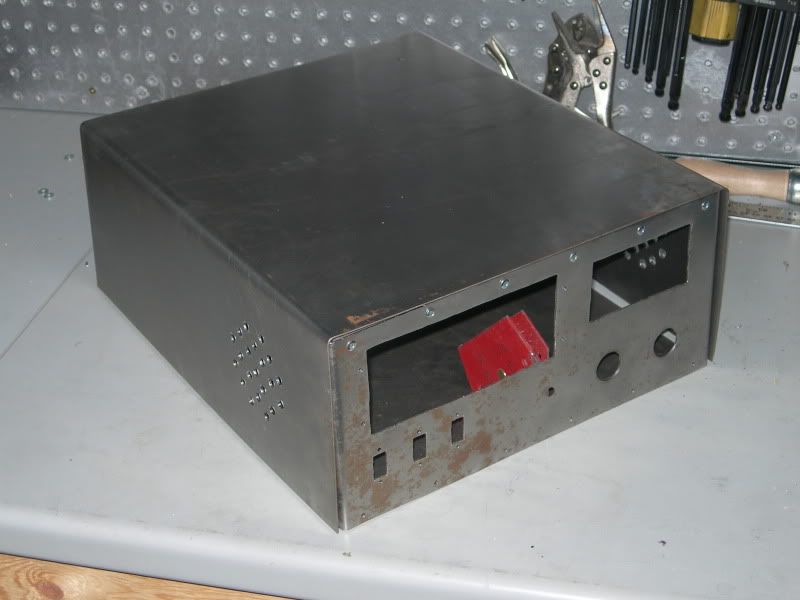
Here are some of the electronic components that will be going into the Control Box. On the top row left is a toroidal transformer (35-0-35, 600VA)that will be connected to a bridge rectifier and the capacitors (top row right) resulting in a transformer giving 50VDC @17A.
At bottom row left is a Gecko Drives G540. This is an all-in-one unit that contains both the drive electronics for the stepper motors (4 axises) and the control interface to the computer. At bottom row right is one of the solid state relays (SSR) that will be used to control the spindle, and another to control a pump for flood coolant.
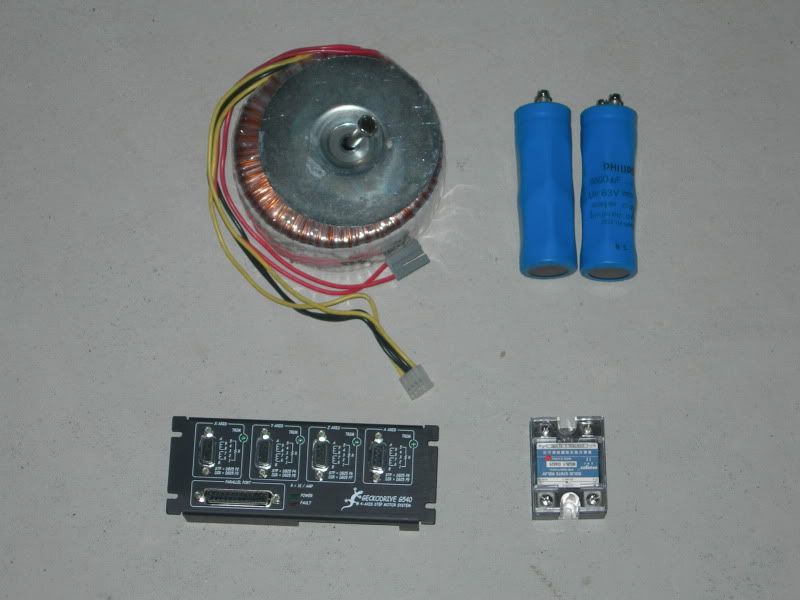
The effort that I put into freshening up the CB750 paid off. I sold the bike and it's new owner will be picking it up this week.
CNC Mill
I have been working in the background on this project, and it is starting to come along...albeit, very slowly.
My main focus now is to complete the Control Box in the next few weeks, and then address the mechanical side of the mill.
Because I have sheetmetal stocked in my garage, I figured that would build a metal box to house all the electronics instead of purchasing one. So I did the layout in SolidWorks, which has an excellent sheetmetal features, and transferred them to sheetmetal. I used 16 gauge sheetmetal for the bottom of the box and 18 gauge everywhere else. The design of the box is such that I could fabricate it with one of those cheap sheetmetal brakes you can pick up at places like Busy Bee Tools.
The sheetmetal brake that was used.

These are some panels bent with the brake. The bottom panel on the left is 16 gauge and has a .5" lip bent on two parrellel sides to allow for riveting. Sitting on top of the bottom panel are two 'L' channels that will be riveted to it. The panels on the right are 18 gauge and have .5" lips bent on the short sides, as well as a "L" channel piece riveted to the top on each.

Mockup of the Control Box without the top.

With the top on.

Here are some of the electronic components that will be going into the Control Box. On the top row left is a toroidal transformer (35-0-35, 600VA)that will be connected to a bridge rectifier and the capacitors (top row right) resulting in a transformer giving 50VDC @17A.
At bottom row left is a Gecko Drives G540. This is an all-in-one unit that contains both the drive electronics for the stepper motors (4 axises) and the control interface to the computer. At bottom row right is one of the solid state relays (SSR) that will be used to control the spindle, and another to control a pump for flood coolant.

Subscribe to:
Posts (Atom)
